Why has the Norwegian Forest Cat, with its Viking heritage and distinctive allure, become a cherished family companion despite potential health challenges?
Norwegian Forest Cats stand out with their muscular builds and sociable yet independent temperaments. Historically, they’ve been agile Viking mousers, but today they are known as adaptable pets with a potential lifespan of up to 16 years. Understanding the breed’s physical characteristics—like their impressive size, weight, and thick coats—is essential for potential owners.
Despite their robust nature, Norwegian Forest Cats are not without health concerns. It’s important to be aware of potential issues such as Hypertrophic Cardiomyopathy (HCM), Hip Dysplasia, and Glycogen Storage Disease Type IV. These cats’ independent yet sociable demeanor means they require a balanced care routine that includes a proper diet, grooming, and regular veterinary visits to support their health and happiness.
Key Takeaways
- Norwegian Forest Cats have a storied history and strong presence.
- They are muscular, sociable, and playful pets with mild temperaments.
- Potential owners should be aware of common Norwegian Forest Cat health problems.
- Balanced care, including diet and grooming, is crucial for their well-being.
- Regular veterinary visits can help manage health issues effectively.
Introduction to Norwegian Forest Cats and their History
The Norwegian Forest Cat boasts a rich and fascinating history that traces back to the age of Viking explorers. Known for their robust size, these long-haired feline giants are easily identified by their distinct triangular heads and expressive almond-shaped eyes.
Historically, these cats were not just cherished pets, but essential companions to the Vikings. Dubbed as proficient Vikings’ Cats, they served as exceptional mousers aboard ships, ensuring that food supplies were free from rodent infestation. As the aeons passed, these dexterous hunters seamlessly transitioned into beloved companions for modern homes.
Endearing narratives from Norse mythology underscore the breed’s legendary charm and importance. One prominent story highlights the goddess Freyja, who is said to have a chariot pulled by these majestic cats. Such tales only serve to amplify the legacy of the Norwegian Forest Cat.
The pivotal moment in the Norwegian Forest Cat History came in the 1970s when the European Fédération Internationale Féline officially recognized the breed. This acknowledgment played a crucial role in preserving their lineage, especially after the breed nearly faced extinction during World War II. Today, with their elevated status as the Official Cat of Norway, they stand as a symbol of national pride and cultural heritage.
Modern Norwegian Forest Cats owe much of their traits to natural selection in cats. Their thick, water-resistant coats attest to their adaptation to the cold Scandinavian climate, ensuring survival through the ages by sheer resilience and natural prowess.
The survival and resurgence of the breed, from ancient Viking ships to contemporary homes, highlights the remarkable journey and undeniable significance of the Norwegian Forest Cat.
Physical Characteristics of Norwegian Forest Cats

Norwegian Forest Cats are not just distinguished by their enigmatic history and friendly nature, but also by some striking physical traits.
Size and Weight
The Norwegian Forest Cat Size is quite impressive, with males weighing between 12 and 16 pounds while females are somewhat lighter. Patience is a virtue, as these elegant felines reach their full size and maturity around 5 years of age.
Coat and Appearance
The Coat of Norwegian Forest Cats is nothing short of spectacular. Their dense, waterproof double coat comes in various colors, excluding colorpoint. This coat isn’t just for show; it’s well-adapted to withstand the rigors of Scandinavian winters, providing both insulation and a seasonal change of wardrobe. With large, forward-arching ears and a straight profile, these cats possess a rugged yet sleek look that is uniquely their own.
Longevity
The Longevity of Norwegian Forest Cats is another remarkable aspect of this breed. With proper care, including a balanced diet and regular veterinary visits, these intelligent and robust cats can live up to 16 years. This longevity means more time for you to enjoy their playful and sociable nature.
Here’s a quick summary of their key physical traits:
| Characteristic | Details |
|---|---|
| Size | 12-16 pounds (males), slightly lighter for females, full maturity at 5 years |
| Coat | Dense, waterproof double coat, various colors (except colorpoint) |
| Longevity | Up to 16 years with proper care |
Common Health Problems in Norwegian Forest Cats
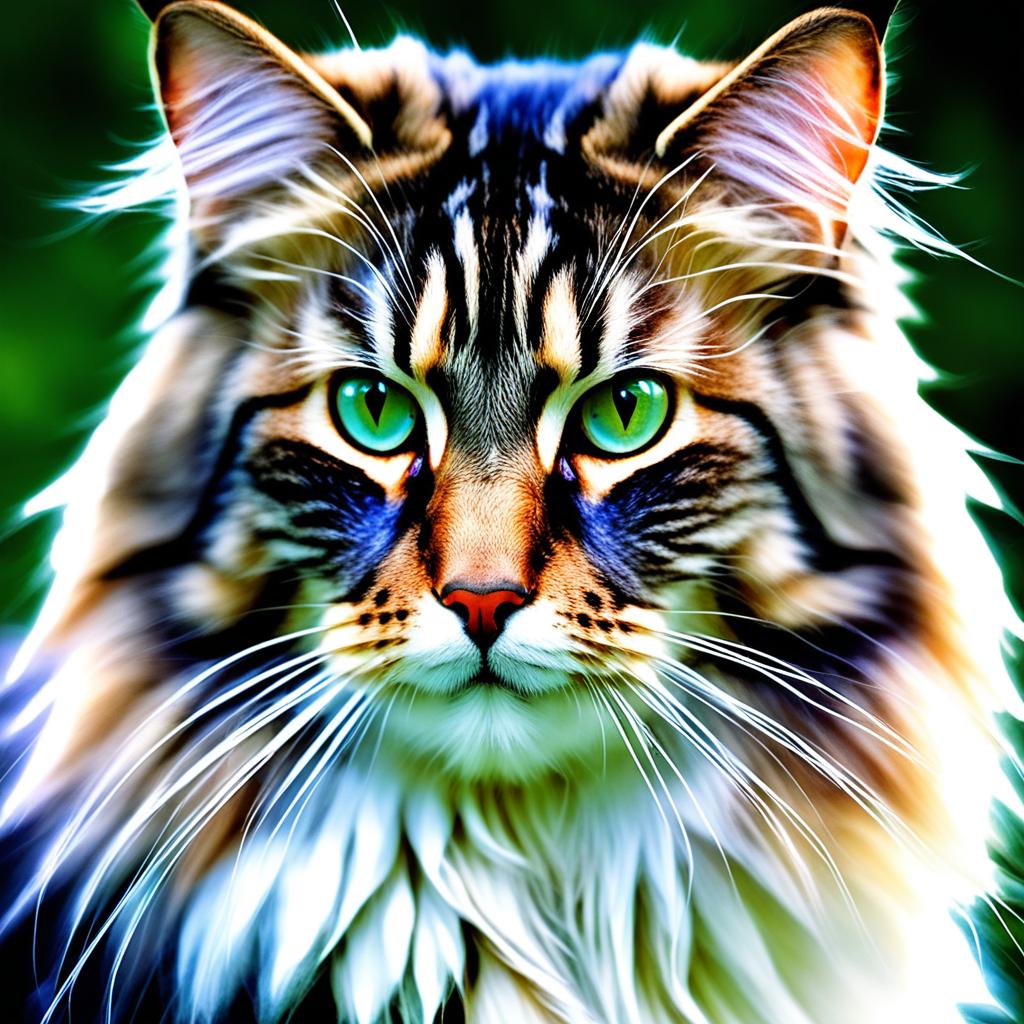
Even though Norwegian Forest Cats appear robust, they are susceptible to specific hereditary conditions that require vigilant care. Understanding these health challenges can help in maintaining their overall well-being and longevity.
Hypertrophic Cardiomyopathy (HCM)
Hypertrophic Cardiomyopathy in Cats is a severe condition marked by the thickening of heart muscle walls, which can lead to congestive heart failure. Regular cardiac screenings and early detection are essential to manage this potentially fatal disease.
Hip Dysplasia
Hip Dysplasia in Cats is particularly prevalent in larger breeds, causing joint problems and arthritis. Implementing a balanced diet, maintaining an appropriate weight, and providing orthopedic beds can alleviate some of the discomfort associated with this condition.
Glycogen Storage Disease Type IV
Glycogen Storage Disease Type IV in Cats is a rare genetic disorder affecting glucose metabolism, and it can manifest from birth or within the initial months. Early diagnosis and genetic screening are crucial for managing this disease, which can significantly impact a cat’s health.
To help you better understand these conditions, here is a detailed comparison:
| Condition | Nature | Symptoms | Prevention |
|---|---|---|---|
| Hypertrophic Cardiomyopathy (HCM) | Thickened heart muscle walls | Labored breathing, lethargy, collapse | Regular cardiac screenings |
| Hip Dysplasia | Joint abnormalities | Stiffness, reluctance to move | Weight management, orthopedic care |
| Glycogen Storage Disease Type IV | Impaired glucose metabolism | Weakness, failure to thrive | Genetic screening |
Proactive care, including vigilant observation for symptoms such as labored breathing and lethargy, is vital for effectively managing these health problems in Norwegian Forest Cats. Early intervention can make a significant difference in their quality of life.
Understanding Norwegian Forest Cat Behavior
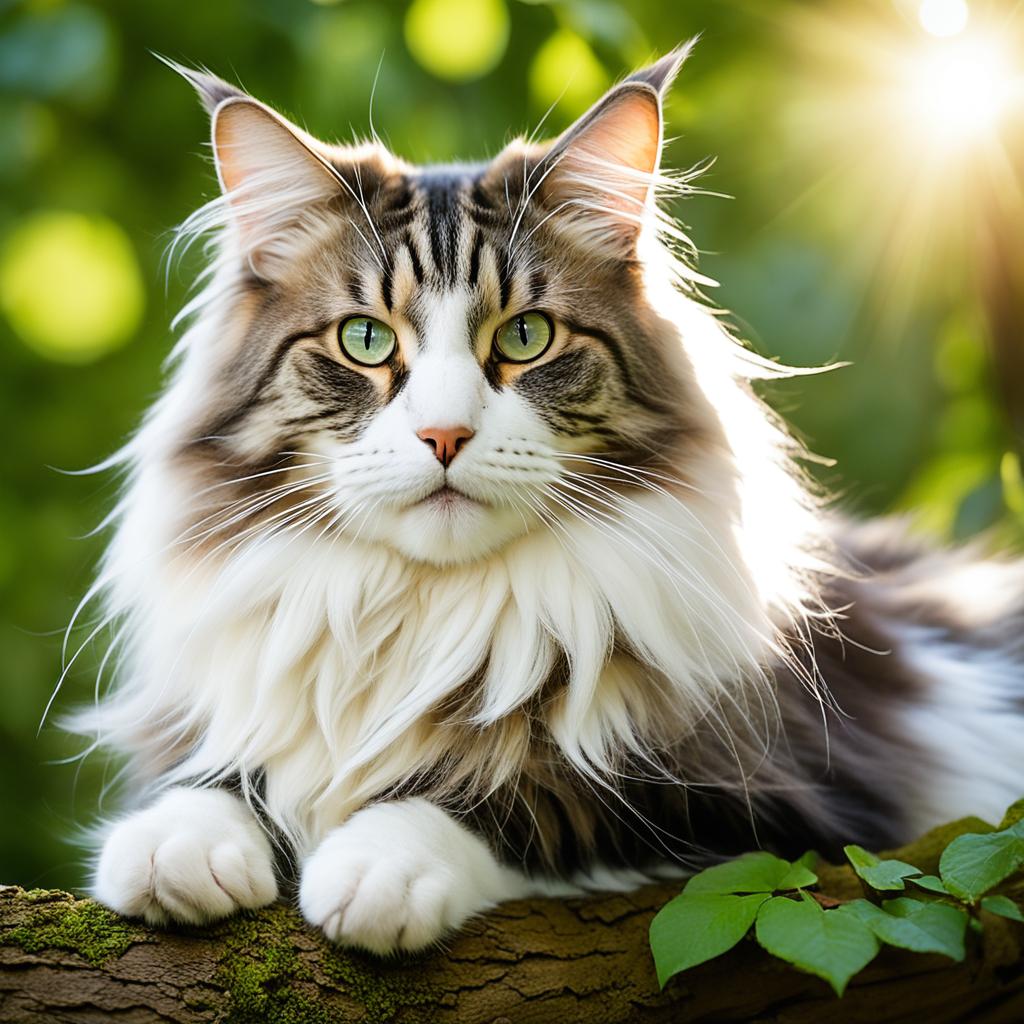
Is your Norwegian Forest Cat giving you a conundrum of cuteness with a dash of enigma? Breathe easy! These quirky felines are the epitome of smart, sociable, and independent—a trifecta that spells out the charming Norwegian Forest Cat temperament.
Known for being sociable cats, they relish interacting with their human families but have a soft spot for their solitary moments. Imagine living with a roomie who’s a social butterfly at party time but also enjoys binge-watching alone—yup, that’s your Forest Cat!
These cats don’t need constant pampering. Instead, they exhibit an intelligent resolve to entertain themselves while staying near you, ensuring they never miss out on the action. So, if there’s a game of fetch or a fascinating puzzle, count on their participation, bringing a delightful balance to their intelligent cat breeds DNA.
Their adaptability is another feather in their cap. Whether in a bustling household or a tranquil abode, they blend seamlessly. Their preference for observation, rather than incessant physical contact, adds to their enigmatic appeal, and they enjoy watching the family dynamics unfold like a true feline Sherlock.
Got intriguing little bursts of energy around? Perfect! The playful demeanor of a Norwegian Forest Cat will shine through, ensuring your days are filled with laughter and spontaneous entertainment. And yes, they’ll keep a keen eye on you—monitoring, analyzing, and occasionally joining in with an air of dignified curiosity.
Engage, stimulate, and let your Forest Cat’s quirky charm keep you on your toes. Their eclectic mix of sociability, intelligence, and independence makes them a thoroughly riveting companion. Next time you see them perched quietly, remember: they’re reveling in the best of both worlds.
What Are the Common Behavioral Issues in Norwegian Forest Cats?
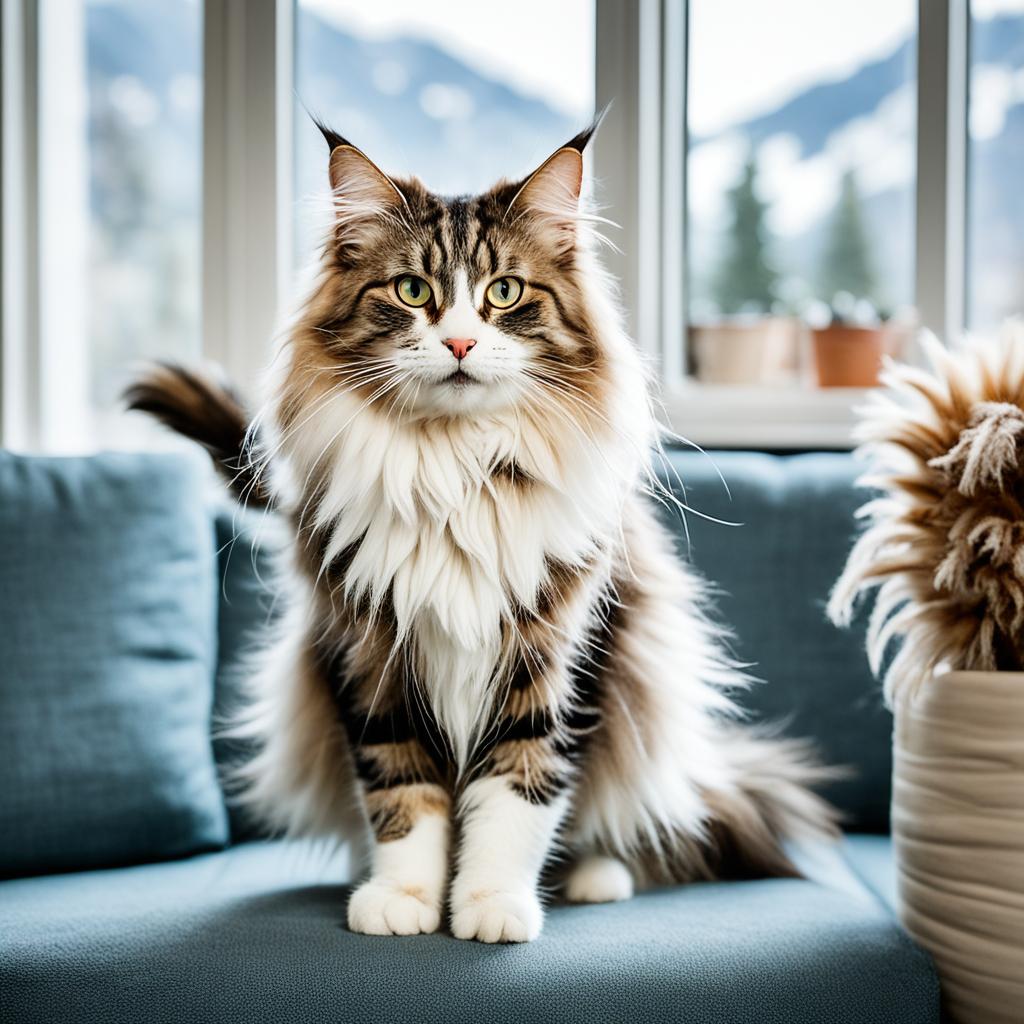
While Norwegian Forest Cats are typically known for their social and playful nature, a few behavioral quirks can arise under certain circumstances. Awareness and proactive handling can help you manage these issues for a happier feline companion.
Aggression
Norwegian Forest Cat Aggression may stem from underlying health problems or environmental stressors. Recognizing signs such as hissing, swatting, or biting can be crucial. Providing a calm, enriched environment often mitigates such aggressive behaviors.
Anxiety
Norwegian Forest Cat Anxiety can become a problem, especially if these cats are frequently left alone. Manifestations like destructive behavior or excessive vocalization may indicate stress. Ensuring they have plenty of interaction and stimulation can alleviate anxious tendencies.
Territorial Behavior
Inherent territorial instincts in Norwegian Forest Cats might lead them to mark or defend their space. This Norwegian Forest Cat Territorial Behavior underscores the importance of environmental enrichment and routine. Providing defined spaces and routine can help manage and reduce such territorial tendencies.
“Recognizing the specific behavioral triggers in your Norwegian Forest Cat can lead to more effective management strategies and a more harmonious living environment.” – Cat Behavior Experts
| Behavioral Issue | Common Triggers | Mitigation Strategies |
|---|---|---|
| Aggression | Health problems, environmental stressors | Calm environment, behavioral enrichment |
| Anxiety | Frequent loneliness, lack of stimulation | Interaction, playtime, varied activities |
| Territorial Behavior | Inherent instinct, lack of defined space | Defined spaces, consistent routines |
Diet and Nutritional Needs
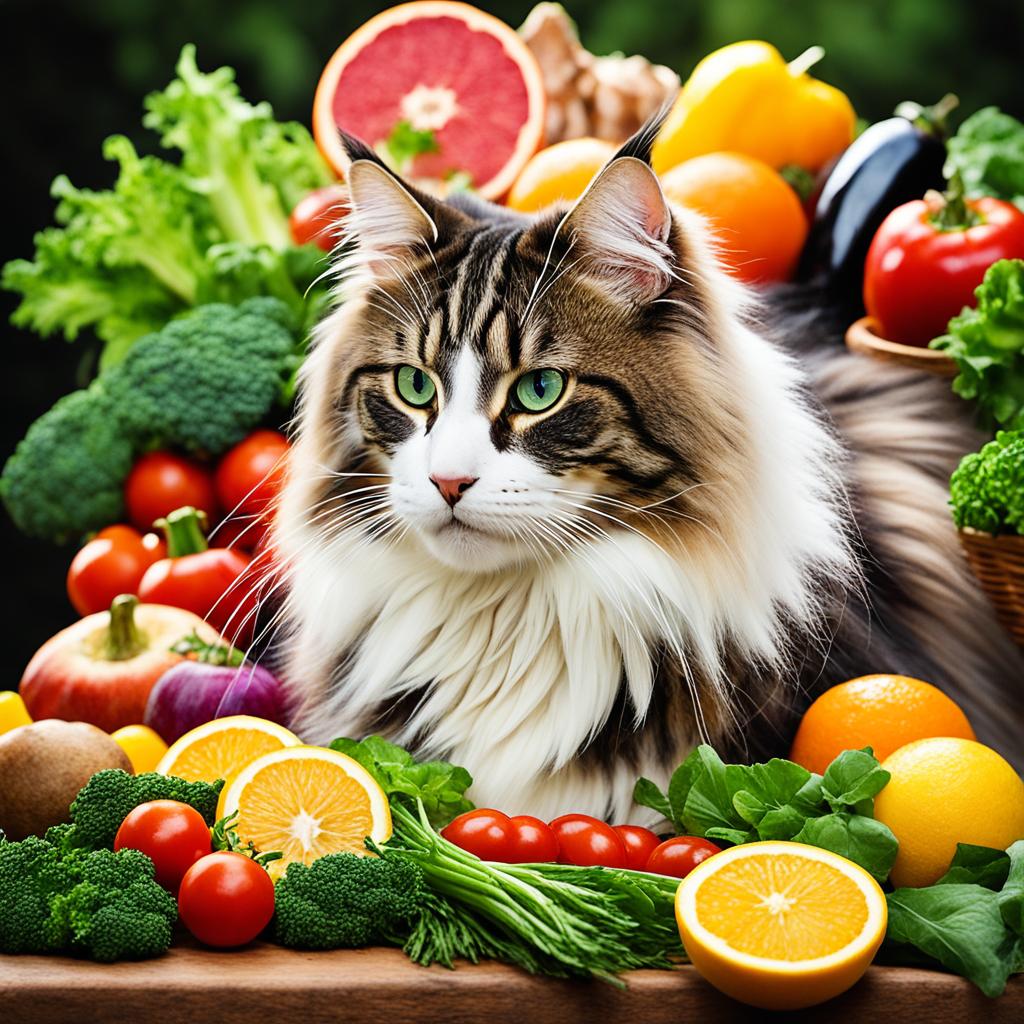
Norwegian Forest Cats demand a diet that mirrors their natural needs. Ensuring they receive the right balance of nutrients is pivotal in maintaining their health and vigor. Here’s how you can achieve this:
Balanced Diet
The cornerstone of a proper Norwegian Forest Cat diet is a rich supply of animal protein and healthy fats. This type of Cat Nutrition is essential for their energy levels, muscle maintenance, and overall wellness. Focus on high-quality, AAFCO approved food that contains minimal fillers like carbohydrates. These cats thrive on a diet that emphasizes meat-based ingredients while keeping their skin and coat in top condition.
Portion Control
It’s easy to get carried away with those big, emerald eyes begging for more kibble, but portion control for cats is crucial, especially given their predisposition to obesity-related conditions such as hypertrophic cardiomyopathy and hip dysplasia. Measuring your cat’s food and following your vet’s advice on portions can help prevent overfeeding. Routine veterinary guidance can be invaluable in tweaking portions as your cat’s activity level and age change over time.
Grooming and Maintenance Tips
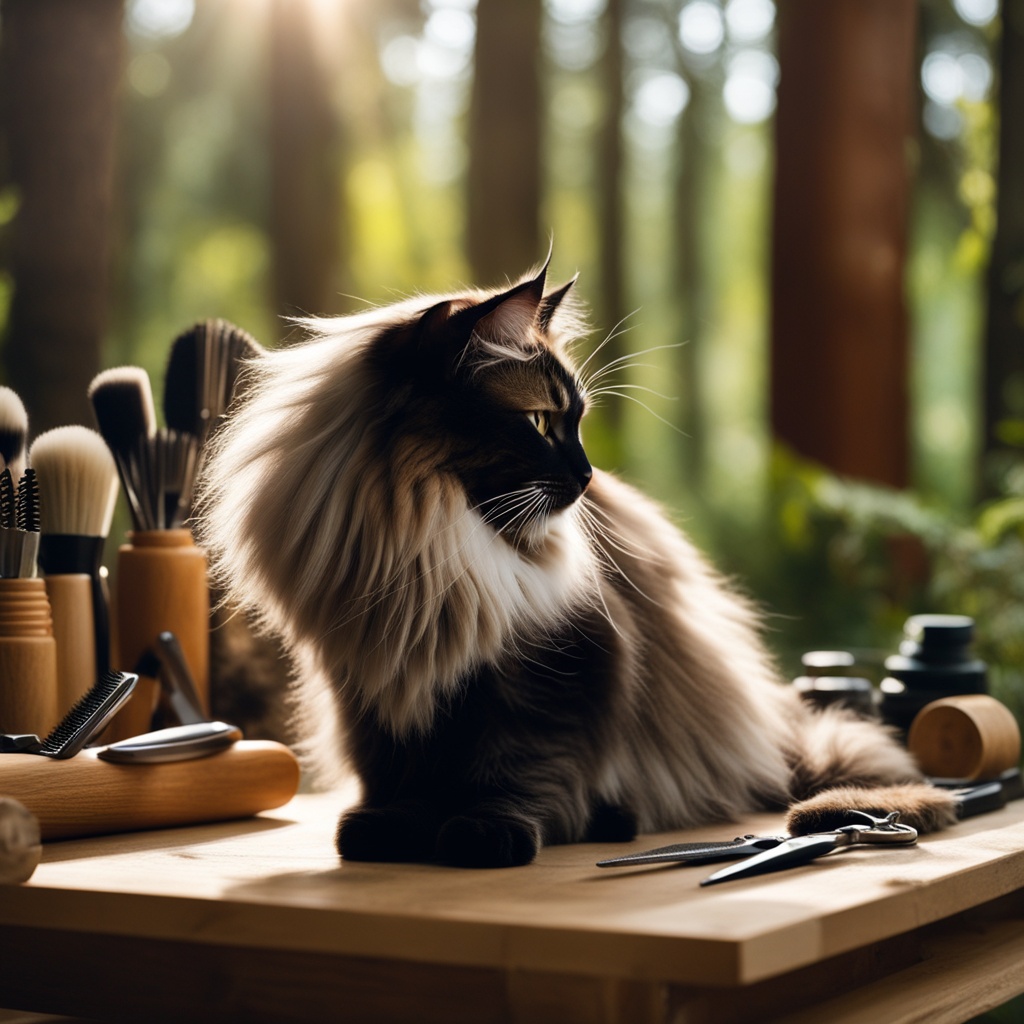
Norwegian Forest Cat grooming is essential for maintaining their luxurious, dense coat. With a bit of effort, you can keep your feline looking fabulous while ensuring their overall health is in top shape.
Weekly grooming sessions are crucial. Regular combing helps prevent matting and reduces the risk of hairballs, keeping your household fur-free. During seasonal shedding, it’s wise to increase the grooming frequency to manage the extra hair effectively.
Paying attention to nail care is equally important for maintaining cat health. Due to the tufts of fur between their paws, Norwegian Forest Cats can have a tougher time keeping their nails trimmed naturally. Regularly check and trim them to avoid overgrowth.
Implementing a consistent grooming routine not only keeps your cat’s coat in pristine condition but also provides an excellent opportunity to monitor their overall well-being. Look out for any unusual conditions or issues that may need veterinary attention.
| Grooming Task | Frequency | Purpose |
|---|---|---|
| Combing | Weekly/Daily during shedding | Prevent matting and hairballs |
| Nail Trimming | Every 2-3 weeks | Prevent overgrowth |
| Health Check | During grooming sessions | Monitor overall well-being |
Keeping a robust grooming schedule ensures your Norwegian Forest Cat remains the epitome of feline elegance. Plus, it strengthens your bond, making grooming sessions a time of affection and care. Remember, Cat Coat Care is as important as playtime!
Environmental Enrichment for Norwegian Forest Cats
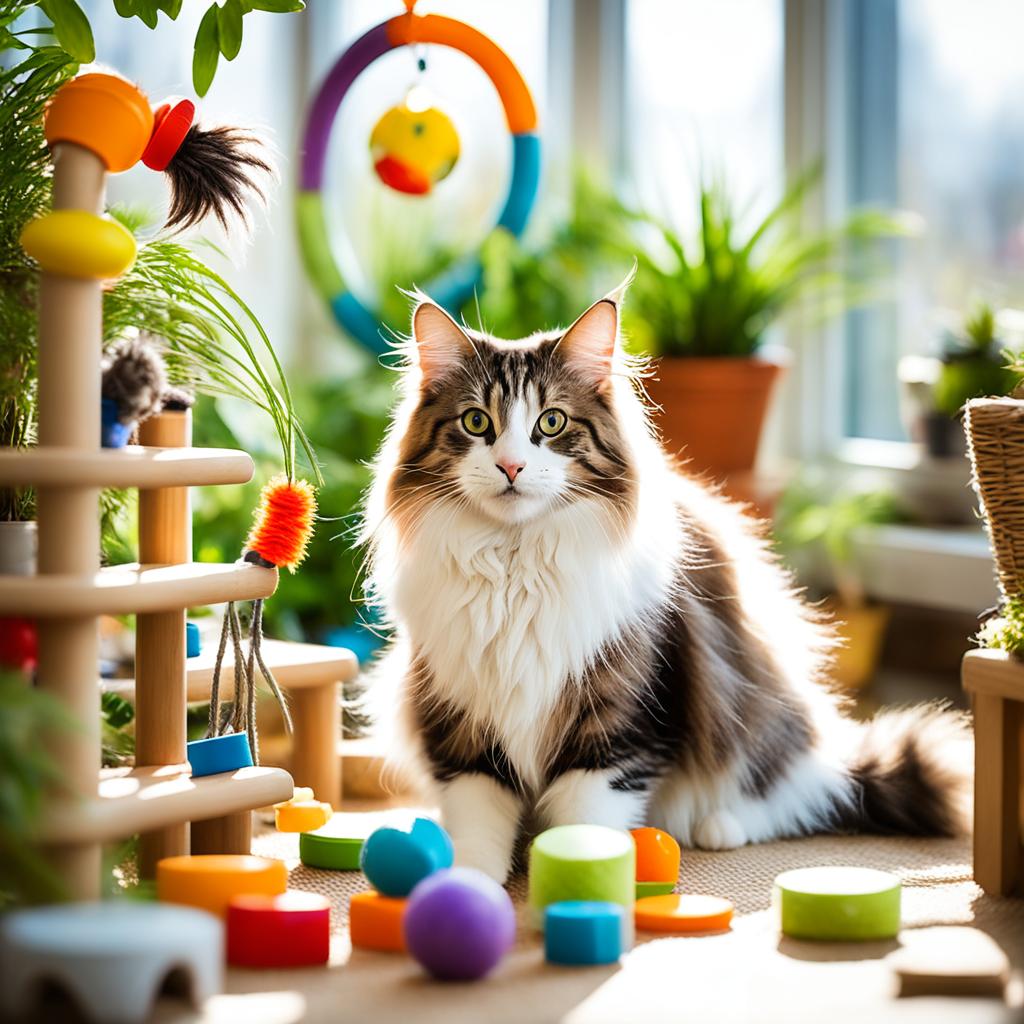
Creating a stimulating environment for your Norwegian Forest Cat is paramount to their happiness and health. Given their intelligent and active nature, comprehensive cat environmental enrichment is essential. Think beyond the basics; investing in tall cat trees, varied scratching posts, and interactive toys can transform your home into a feline paradise.
Imagine the delight as your cat scales a multi-tiered tree or conquers a challenging puzzle toy. These aren’t just random indoor cat activities; they’re vital for mental and physical stimulation. Norwegian Forest Cats have strong hunting instincts that need fulfillment, even within the walls of your home.
A dynamic setting can prevent boredom and curb negative behaviors. Engage them with toys that simulate hunting, like feather wands and laser pointers, which provide necessary stimulation for cats. Incorporating new elements periodically keeps their interest piqued, making them less likely to indulge in undesired actions like scratching furniture or excessive meowing.
What’s more, these activities aren’t purely about occupying them. They contribute significantly to their mental well-being, ensuring your Norwegian Forest Cat remains a content and well-adjusted companion.
Training Your Norwegian Forest Cat
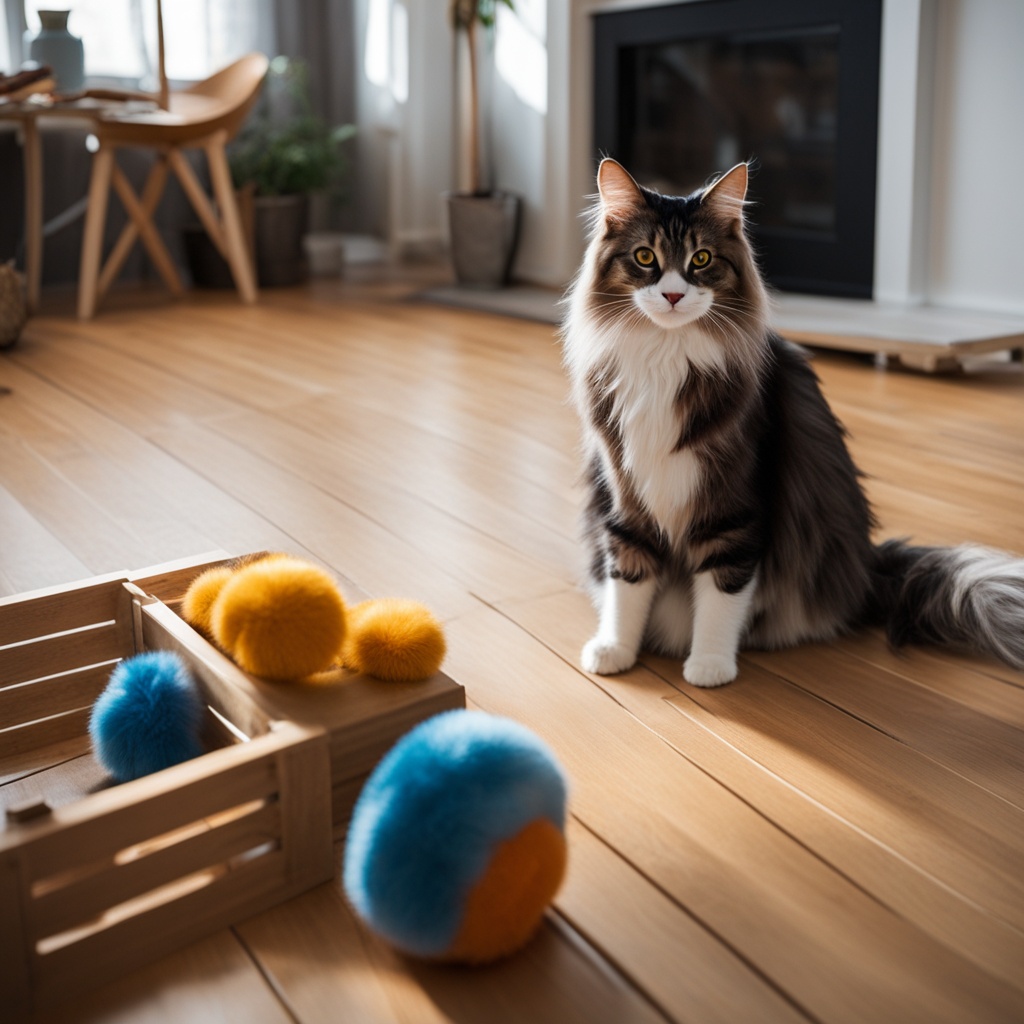
Training Norwegian Forest Cats can be a rewarding and enriching experience, both for you and your feline friend. Being highly intelligent, they respond well to positive reinforcement methods like cat clicker training. This approach allows you to communicate effectively with your cat, encouraging desired behaviors through clear, consistent signals.
One of the first steps in training is introducing your cat to a litter box. Fortunately, litter box training is usually straightforward with this breed. The key is to ensure the litter box is spacious enough to accommodate their larger size, providing them with a comfortable and stress-free environment to do their business.
Patience and consistency are crucial when implementing any training regime. Norwegian Forest Cats may not grasp commands immediately, but with steady efforts, they will eventually catch on. Utilizing cat clicker training sessions that are short and entertaining will keep their attention and facilitate quicker learning.
Another essential aspect of training Norwegian Forest Cats is establishing a bond of trust. Regular, positive interactions foster a deeper relationship, making your cat more inclined to follow your lead. Remember, training isn’t just about teaching tricks; it’s an ongoing dialogue that enhances the connection between you and your Norwegian Forest Cat.
| Training Aspect | Description | Tips |
|---|---|---|
| Cat Clicker Training | Using a clicker to mark desired behaviors followed by rewards | Keep sessions short, around 5-10 minutes |
| Litter Box Training | Teaching proper use of the litter box | Ensure the box is large enough and cleaned regularly |
| Positive Reinforcement | Rewarding good behavior instead of punishing bad behavior | Use treats, praise, and affection as rewards |
Emphasize rewarding progress to build confidence and motivation in your Norwegian Forest Cat. Whether it’s cat clicker training or mastering litter box training, your patient guidance will pave the way for a well-behaved and happy cat.
Choosing the Right Veterinary Care

Ensuring your Norwegian Forest Cat receives top-notch veterinary care for cats is a surefire way to maintain its robust health and spirited nature. Expert veterinary support is indispensable, and it starts with establishing a routine that includes both cat health check-ups and timely cat vaccinations.
Regular Check-ups
Routine cat health check-ups are fundamental for early detection of ailments. Vets can monitor for hereditary conditions like Hypertrophic Cardiomyopathy (HCM) and hip dysplasia, ensuring prompt and appropriate interventions. Scheduled visits facilitate the monitoring of vital signs, physical condition, and overall health, helping to preemptively tackle issues before they escalate.
Vaccinations
Timely cat vaccinations are paramount in shielding your furry friend from common feline diseases. Vaccinations, tailored to your cat’s age and health status, safeguard against contagious illnesses such as feline viral rhinotracheitis, calicivirus, and panleukopenia. Following your vet’s recommended vaccination schedule is integral to fortifying your cat’s immune defenses.
Ultimately, consistent veterinary care for cats, encompassing regular check-ups and vaccinations, forms the cornerstone of a long, healthy life for your Norwegian Forest Cat. With proactive and preventive measures, you can ensure your feline companion thrives in good health and high spirits.
Conclusion
Embarking on the journey of caring for Norwegian Forest Cats is both a delightful and rewarding endeavor. Their unique heritage and endearing personalities make them exceptional companions, provided their care needs are well understood and met.
A healthy cat lifestyle for these majestic felines involves a balanced diet with high-quality nutrition, mindful grooming routines, and regular check-ups with a trusted veterinarian. By consulting a reputable cat breeder, you can gain valuable insights into their specific health and behavioral traits, ensuring your Forest Cat thrives in your home.
Ultimately, an informed and proactive approach to their care will help secure a long, healthy life for your Norwegian Forest Cat. By embracing their distinctive traits and fostering a nurturing environment, you’ll enjoy the loving, playful, and intelligent nature that makes this breed so special.




